This past weekend’s Mythic Invitational brought a satisfying conclusion to one of pro Magic’s biggest storylines: the rise of Historic as a premier format. It seemed so unlikely at first; prior to the pandemic, Pioneer was the popular choice, while Historic was hampered by negative PR and a lack of clear direction. But with Historic available on Arena through this year’s lengthy lockdown and the stagnation of the Pioneer metagame around Dimir Inverter, Historic has had a chance to build momentum. With popular support and now Magic Esports behind it, Historic seems like it will be the most important “postmodern” format for competitive play.
If you haven’t taken Historic seriously before now, at least you’re not alone. Many of the famous names qualified for the Invitational seemed to be sitting down to learn about the format the week before the event! Lucky for the rest of us, this tournament provided a good shaking-out of which decks have credibility in the Jumpstart/Amonkhet Remastered environment — which, in turn, lets us predict how the format might look as Zendikar Rising exerts its influence.
WHEN IN DOUBT…
It seems like many of the holdouts against Historic are veteran paper players who are skeptical of this contrived digital format. Fair enough — but would it change your mind if I told you the #1 deck in this format is… Jund?!
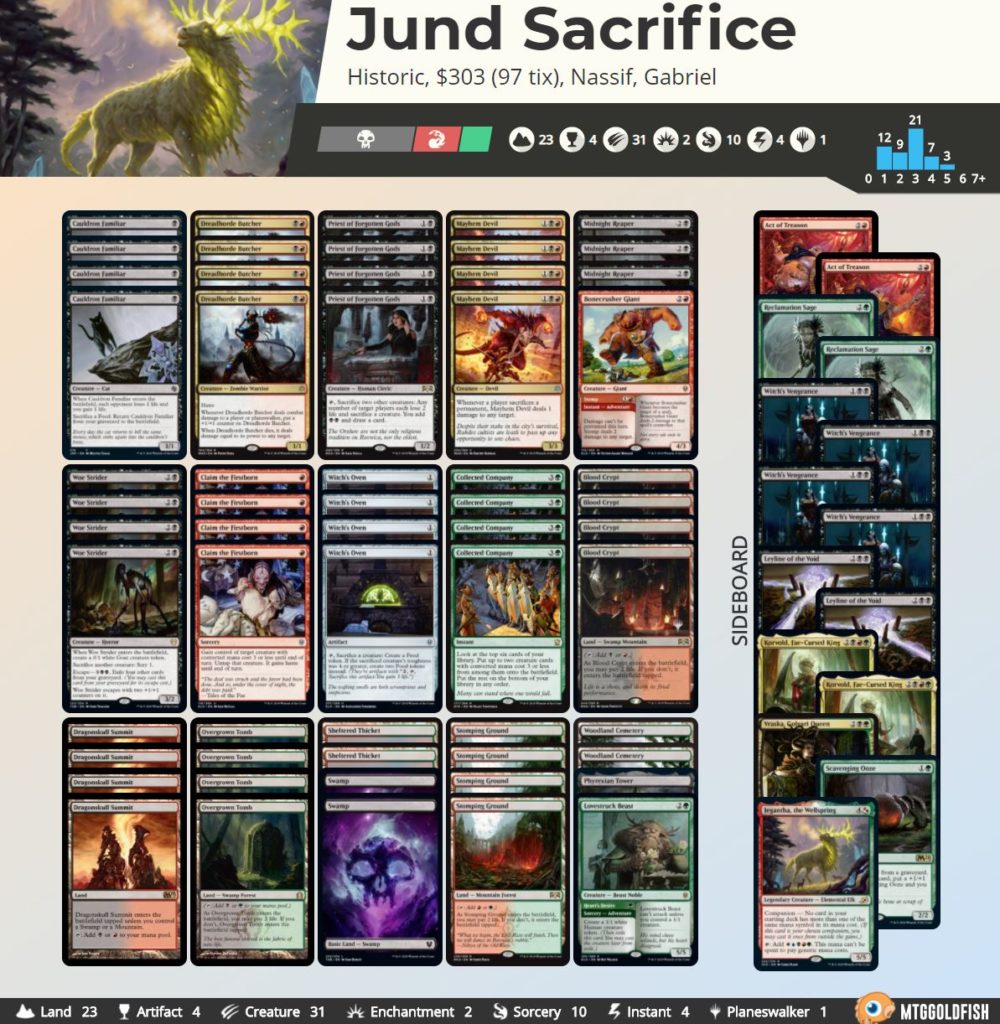
Buy this deck from Card Kingdom!
Export this deck to Arena via MTGGoldfish!
Yes, the poster child of fair Magic is back, no longer relegated to the misty-eyed recollections of “Paper Boomers” like myself! While it was not the most popular choice at the Invitational, format experts like Mason “Esports” Clark backed it as a top-tier shell, and it went on to fill 50% of the Top 8. This was an important result in 2020 Constructed — shifts in card design over the last few years had led many players to question whether more interactive midrange decks like Jund would even be viable against trendy advantage-generating threats like Uro. Clearly, Historic is one place where they still are.
So, how close is the Historic archetype to the Modern deck that so many players swear by? This one’s definitely more RBx midrange than GBx, and focused on the sacrifice synergies between Mayhem Devil and other cards. This sets Historic Jund apart from classic Jund, which was the definition of “good stuff”: a pile of cards each excellent on its own. But not only is there significant depth in card choices even among the builds that made Top 8 — the Historic version of “Jund Sacrifice” is very quickly reaching a point where almost any draw does something worthwhile, and its vulnerability to spot removal is low. When do we acknowledge that this is just a midrange list that happens to include a common sacrifice theme?
The distinct synergies of the list raise the bar for Zendikar Rising cards seeking inclusion, but Jund will certainly benefit from double-faced lands (as will every list). Agadeem’s Awakening seems like an especially powerful include, serving as an “I win” button in the lengthy, grindy games the deck often generates. Soul Shatter and Nighthawk Scavenger seem like generically powerful cards that are especially great in this shell.
The most exciting card is no doubt Nahiri’s Lithoforming. This is an incredibly potent effect if you can turn it to your advantage, and Mayhem Devil is its most brutal and efficient partner. Particularly with the higher land counts these decks will be able to jam with all the DFC’s, the combo-kill potential will be even higher.
The deck will also have a new hate card to respect in Yasharn, Implacable Earth. But with all the new hard removal they can play in land slots, I can’t see that slowing Jund down.
GOBLINS: EXPLOSIVE BUT ERRATIC
The release of hundreds of eternal-powered cards in Jumpstart may not have been quite as devastating as first expected, but at least one new bomb lived up to the hype. Muxus, Goblin Grandee immediately generated a tribal deck around itself that scrapes against the very ceiling of what could be considered “balanced.” Players routinely cast the six-mana goblin on turn three or four and swung for a hundred or so damage once the dust and triggers settled. The hope that Goblins might just be a “Week 1 aggro deck” quickly faded as Muxus continued to ravage the ladder.

Buy this deck from Card Kingdom!
Export this deck to Arena via MTGGoldfish!
The best players in the world also seemed to bow to the power of Muxus; Goblins archetypes made up two of the top four most played decks at the Invitational! A little under half the Goblins players splashed black for Thoughtseize — a contentious choice with fierce arguments both for and against.
While the Mono-Red Goblins players appeared vindicated by better overall records, they still only put Ken Yukuhiro into the Top 8 out of the initial swarm (with Emma Handy sitting just outside the cut as next best). Jund converted four spots from ~25 players, by comparison. So, what does this mean? Is Goblins the best deck or not?
If you’re only laddering, Goblins is still a great choice — you’ll steal a lot of games with overwhelming nut draws, and both wins and losses go by fast. While it’s not a mindless deck by any stretch, it’s also easier to harness its massive brute power than it would be to tune your perfect personal build of Jund or Sultai. These reasons were likely bigger drivers of its metagame share at the Invitational than its raw power alone, and they will continue to push the metagame share of Goblins going forward. That being said, the deck can easily brick, hate cards can slow it down significantly, and it’s unlikely to pick up any cards from ZNR outside of lands. If you need consistency to make the cut among Magic’s most elite players, the Goblin gamble may disappoint you.
SULTAI: STILL RAMPING UP
This was the winning deck of the event, but Seth Manfield had to unleash all his personal wizardry (and a little birthday magic!) to take that trophy. He was also the only Sultai player to make Top 8, despite it starting as the second most popular archetype behind Goblins. The deck did seem a touch soft to Thoughtseize — and there was a lot of Thoughtseize in the room. But, to me, this Sultai build demonstrates that counterspells are the only worthy interaction in 2020; trying to answer cards like Muxus, Citadel, and God-Pharaoh’s Gift after they hit the table is going to lose you a number of games. For the record, Seth Manfield’s winning list had above-average stack interaction: four Aether Gusts and two other main-deck counterspells, with more in the side.
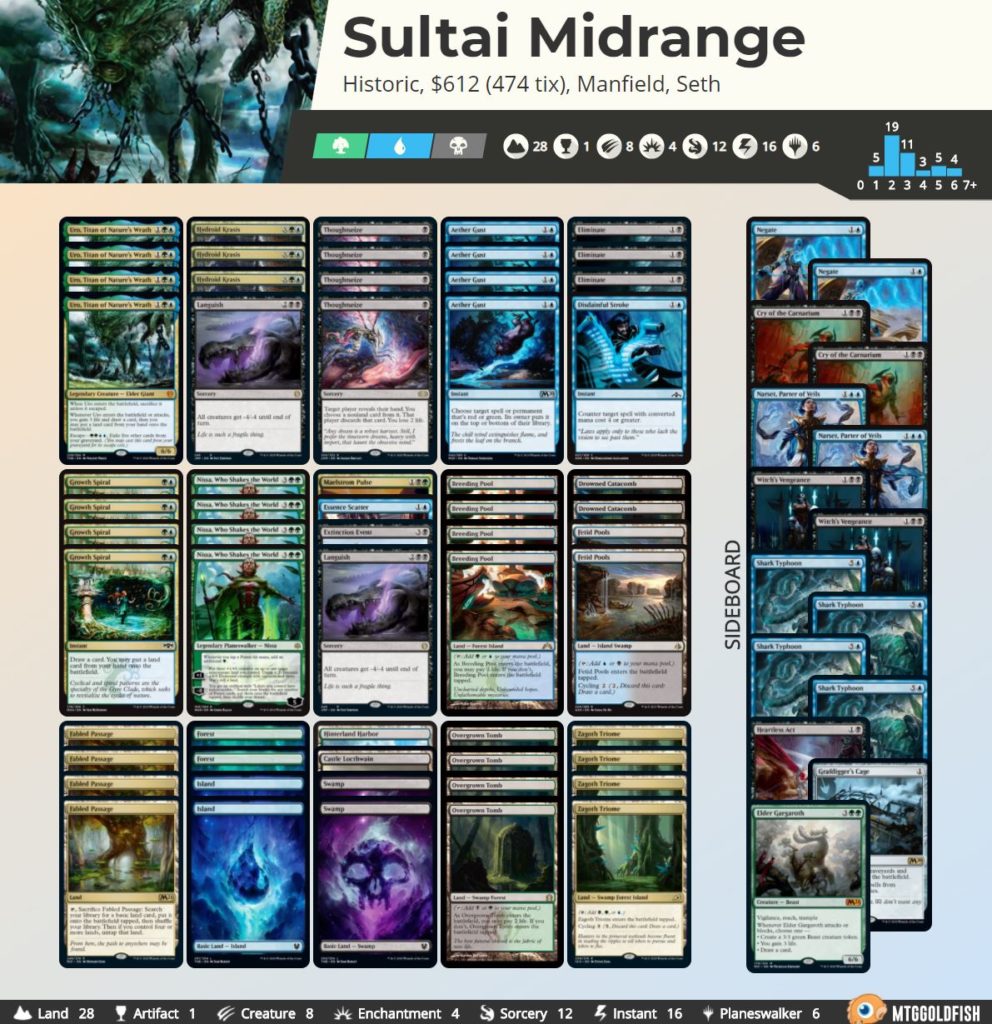
Buy this deck from Card Kingdom!
Export this deck to Arena via MTGGoldfish!
These results should be taken with a pinch of salt, though — Sultai Ramp stands to see the most significant overhaul with ZNR. Lotus Cobra and other landfall cards incentivize an even higher land count than Sultai already goes for. I fully expect to see more than 40 total mana sources when DFC’s are included, which means displacing a lot of the current kit in favor of those effects. They aren’t all great fits, either — Turntimber Symbiosis doesn’t really gel with either Uro or Krasis. It’s possible the increased ramp potential and decrease in threats leads this to become even more of a ramp deck, just powering out Ugin and Ulamog around some cheap discard and counters. Then you can be the one raking up instant concessions!
BREAKING OUT IN WINS
A few relatively newer archetypes established their bonafides through the tournament — and given the contents of Amonkhet Remastered, that mostly meant Thoughtseize decks.

Buy this deck from Card Kingdom!
Export this deck to Arena via MTGGoldfish!
For one thing, the Young Pyromancer deck everyone asked for is finally here! After much debate over whether the card was good enough, we now have definitive proof (at least if your name is Luis Salvatto). Like Jund Sac, this deck has a very specific engine to preserve, but it could still pick up some key cards. DFC lands are treated as their spell sides in the graveyard, which opens up interesting possibilities for a deck that sacrifices spares (or bounces them with Wayward Guide-Beast). Malakir Rebirth, Spikefield Hazard, and even Valakut Awakening seem like great places to start.
Inscription of Ruin would be a bold call to replace the planeswalker-killing Bedevil, but it does give you another reanimation effect with flexible options. Feed the Swarm lets you kill enchantments and creatures easily, and lowering your own life total as you inevitably chip away at theirs could make this the Scourge of the Skyclaves deck in Historic. Magmatic Channeler, Nighthawk Scavenger and Skyclave Shade are also going to put a ton of pressure on the available creature slots here. I can even see this abundance of threats spawning a new, more creature-focused archetype!

Buy this deck from Card Kingdom!
Export this deck to Arena via MTGGoldfish!
Meanwhile, Mono-Black Gift helped Matt Nass into the Top 8, and it seems like an explosive, straightforward graveyard deck with not much more to prove. Anyone who saw its time in Standard knows God-Pharaoh’s Gift is a great payoff! What this seems like it could take from ZNR isn’t so much extra pace on its combo, but the opportunity to explore a build focused on the party mechanic. Cards like Nullpriest of Oblivion and Thwart the Grave are very powerful reanimators if you can’t get your Gift online fast enough, and Coveted Prize is another incredible payoff. The deck has fitting options for rogues, wizards and clerics without leaving black, but for warriors, you’re stuck with Gutterbones and the new Sea Gate Colossus. I agree with Mason Clark’s assessment — it feels like the next breakthrough here will be deciding on a splash color, and that will keep this deck in the conversation along with the raw power of its signature card.
RISING SPARKS
So, that’s the key decks of the Historic meta right now, and how they might be affected by Zendikar Rising. But to make sure I’m being thorough, let’s very quickly end on a list of cards that seem poised to create (or resurrect) fresh deck types once the set releases.
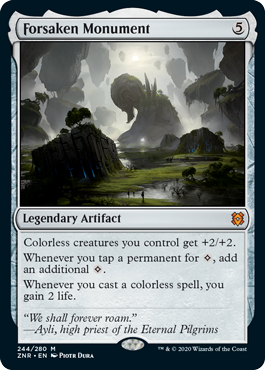
Forsaken Monument looks like the missing piece for the cheesy but lightning-quick Tempered Steel decks, increasing their “payoff-to-air” density such that the deck can reliably put on a fast clock.
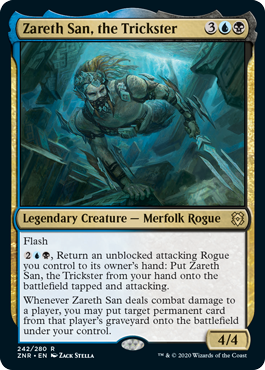
I’ve written probably more than I ever need to here about Ux Flash, especially UB. But Soaring Thought-Thief and Zareth San, the Trickster warrant a revisit of the rogues package in that deck.
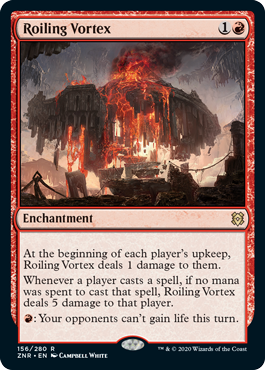
Roiling Vortex looks like all of red’s Christmases came at once — a surprise Sulfuric Vortex effect to help combat Uro and co.! Historic Red just got a huge shot in the arm from Amonkhet Remastered; if players are capable of keeping up a mana for it, Roiling Vortex should ensure the deck stays high-tier.
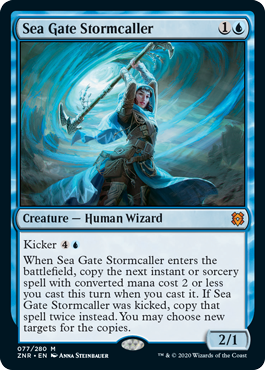
Sea Gate Stormcaller + Neoform will definitely wreak havoc at some point; it just seems a matter of figuring out what the best possible creature combo is. Similarly, Felidar Retreat has enough game-winning potential packed into one card that I’m certain a deck can be formed around it. The question is what combination involving white can justify such a landfall approach with other payoffs?
I’ll send my adventuring party to find one and get back to you in a couple weeks!

Tom’s fate was sealed in 7th grade when his friend lent him a pile of commons to play Magic. He quickly picked up Boros and Orzhov decks in Ravnica block and has remained a staunch white magician ever since. A fan of all Constructed formats, he enjoys studying the history of the tournament meta. He specializes in midrange decks, especially Death & Taxes and Martyr Proc. One day, he swears he will win an MCQ with Evershrike. Ask him how at @AWanderingBard, or watch him stream Magic at twitch.tv/TheWanderingBard.

